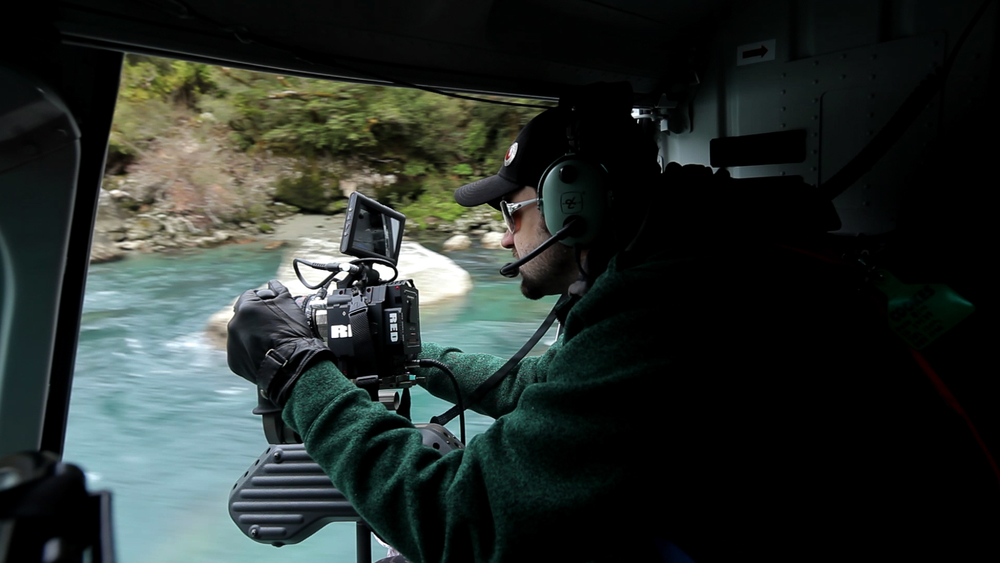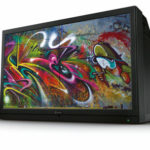
WAS EPIC WORTH THE WAIT?
Posted on May 5, 2011 by Alex Fice
MIKE SEYMOUR DP and co-founder of the popular fxguide training web site was one of the first to own an EPIC M and immediately took to the skies in New Zealand
Stu Maschwitz with the Epic on a fly past.The RED EPIC is finally here, and given the open policy of the RED Digital Cinema Company, we have known it is coming for some time. Unlike other camera companies, especially perhaps the major Japanese manufacturers, RED fully telegraphs its plans not months but years ahead of schedule. This very open policy is a double-edged sword – on the one hand it causes massive loyalty from the faithful, on the other hand any delays or changes are extremely public and often criticised.
So was it worth the wait? Yes. This is so far in front of any other current digital camera it is hard to believe.
The camera shoots 5K resolution (5120×2700) at up to about 100 frames per second, in RAW mode. By comparison, a RED ONE can only shoot high speed if you reduce both the resolution and crop into the image. Of course, a DSLR, while happily shooting high-res RAW stills, can only shoot standard speeds at 1920×1080, with compression and limited 8-bit JPEG-type colour.
Sure, there are high speed cameras that shoot even higher frame rates, but 5K? 5K is 60% more than even the RED ONE’s 4K output, and the files now have vastly improved dynamic range. Not only does the standard image provide loads of dynamic range for grading, the camera also allows HDRx mode shooting, which provides up to another six stops of highlight protection.
How useful is the highlight protection? Well, we just returned from New Zealand shooting for an online EPIC training course at fxphd.com with Stu Maschwitz (of Prolost.com). We shot car to car, interior car, helicopter footage of glaciers, surf, clouds falling over mountains and waterfalls. In every case we found ourselves reaching for the highlight protection. If you are shooting down a zip line flying fox at 70km/h hand-holding an EPIC through trees and opening onto vistas of Queenstown, knowing that you have exposure latitude is a very comforting thought.
Which brings us to the next important point about the EPIC: it is a fraction of the size of an ALEXA or RED ONE. It is not as small as a DSLR but it is so close in size that we used it on DSLR slider rigs and took it places, such as off the back of speed boats, that we would never have had the room to do with any camera other than an SLR.
Finally, the EPIC includes a number of overall improvements from the RED ONE. The SSD is better than the CF cards, the menus are easier to navigate, the screens are brighter and the footage higher res. Basically, this camera is the classic v2.0 that learnt from the first version and got re-engineered to solve real customer issues.
The camera we bought was an EPIC-M, being a machined, hand-built, limited edition first run. EPIC-X, the standard EPICs, are shipping around the time of NAB, notwithstanding component delays due to the sad disruption to the Japanese supply chain felt by all manufacturers in the wake of the recent tragedy there. The EPIC-M and EPIC-X should function identically, but the M cameras are being sold at a premium due to their machining, something no M customer has seemed to complain about. In fact, EPIC-M customers seem to universally be singing the camera’s praises, and why not with such high profile projects as Spider-Man 4 and now The Hobbit committing to an EPIC stereo solution, due to its amazing range and small form factor.
Is it perfect? No, there are still things to be addressed, but this camera is extremely high end, while just being fun to use. Fun in a way no professional camera has a right to be.







